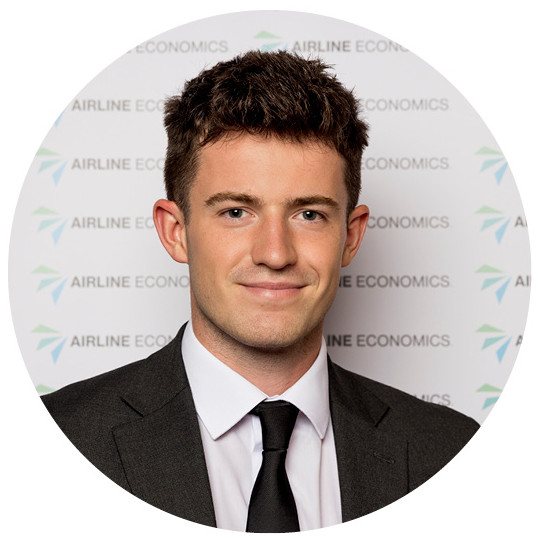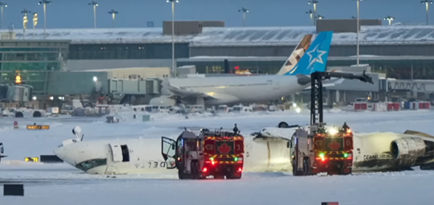Canada’s Transportation Safety Board (TSB) said that a descent rate warning was triggered in the cockpit of Delta Connection flight 4819 before it crashed on landing in Toronto, a newly published preliminary report into the accident outlined.
Delta Connection flight 4819. operated by the airline’s wholly owned subsidiary Endeavor Air, was a CRJ-900 aircraft traveling between Minneapolis-St. Paul International Airport and Toronto Pearson on February 17, 2025, that crashed upon landing and flipped upside-down at the Canadian airport.
The report found that just 2.6 seconds before the plane touched down, the aircraft’s warning system alerted the flight deck with a "sink rate" message, meaning the plane was descending too quickly.
At this moment, the aircraft's airspeed was 136 knots, its ground speed was 111 knots, and it was descending at a rate of about 1,100ft per minute. The plane was also tilting slightly to the right with a 4.7° bank angle, while its engine thrust remained at about 43%.
The TSB said that as the plane touched down, its right main landing gear contacted the runway, causing the wing to detach and triggering a fire. The aircraft overturned and slid down the runway, coming to a stop near the intersection of two of the airport's runways.
All 80 passengers and crew evacuated the plane, with 21 people sustaining injuries, including two people whose injuries were serious.
As the aircraft came to rest inverted, passengers were hanging upside down in their seats, suspended by their safety belts, and many of the carry-on baggage and other items ended up on the aircraft ceiling.
The report said: “Some passengers had difficulty releasing the buckles on their safety belts due to being inverted. Some of the injuries sustained by the passengers occurred when they unbuckled their safety belts and fell to the ceiling.”
The TSB added that it is not aware of any safety belt or seat failures occurring during the accident.
The report also highlighted that the captain of flight 4819 had been at Endeavor Air since October 2007, accumulating about 3570 hours total flight time, including 764 hours on the CRJ-900. The first officer, who had worked for Endeavor Air since January 2024, held 1422 hours total flight time at the time of the incident.
The TSB it is still investigating the cause of the accident, with key details still under examination.

